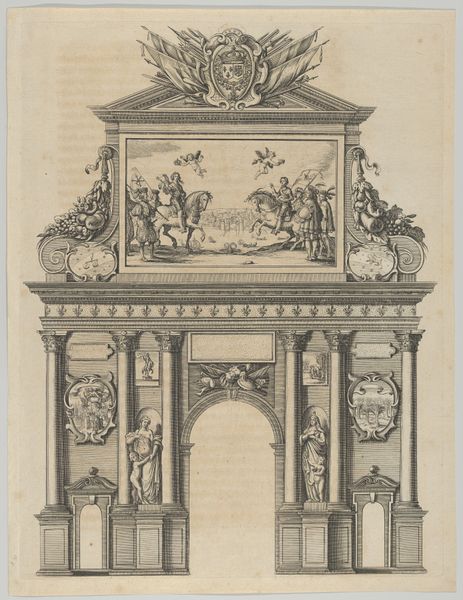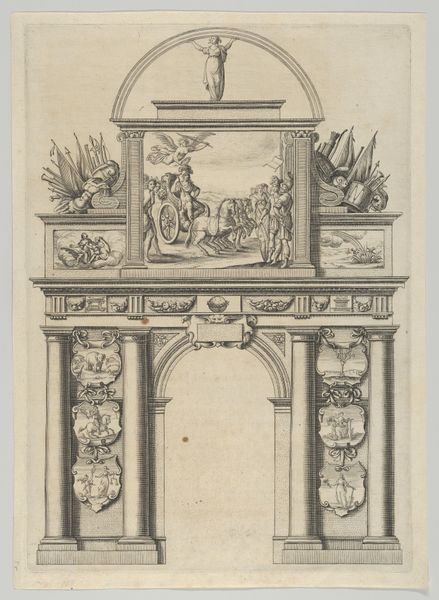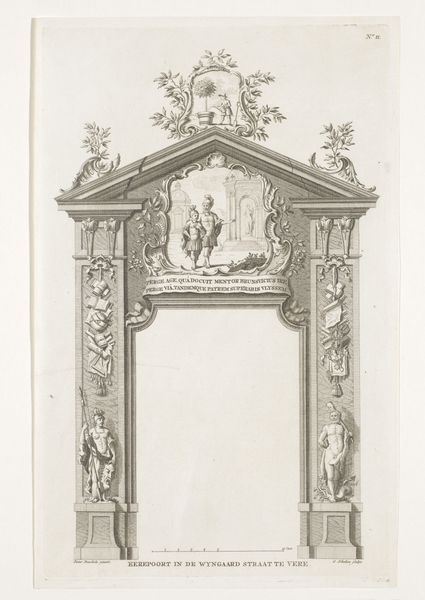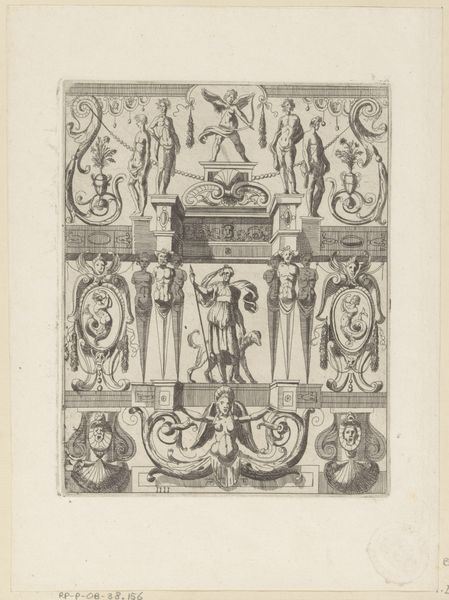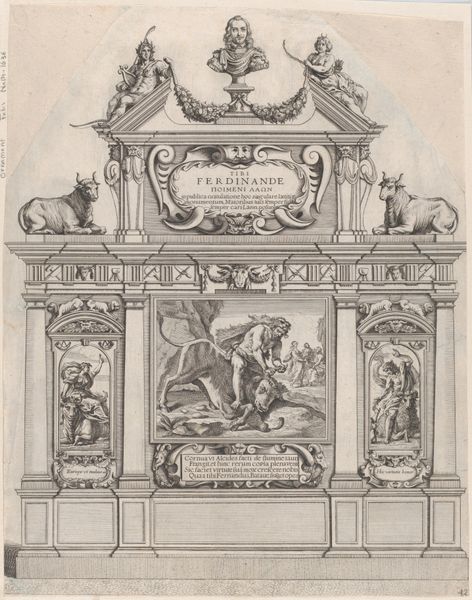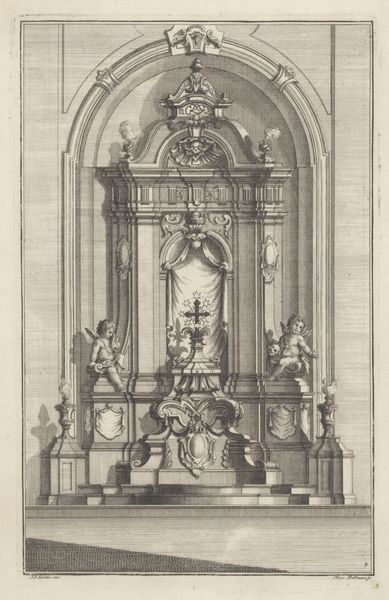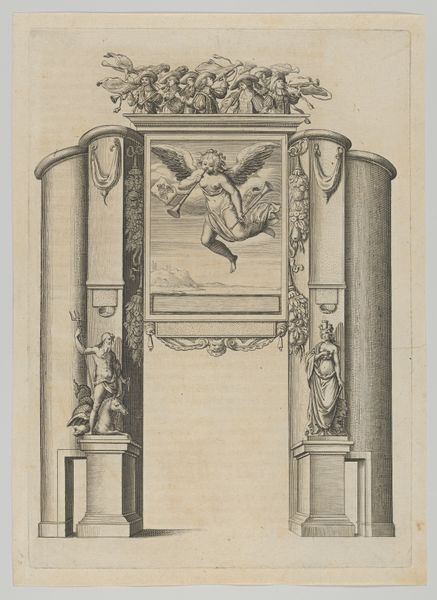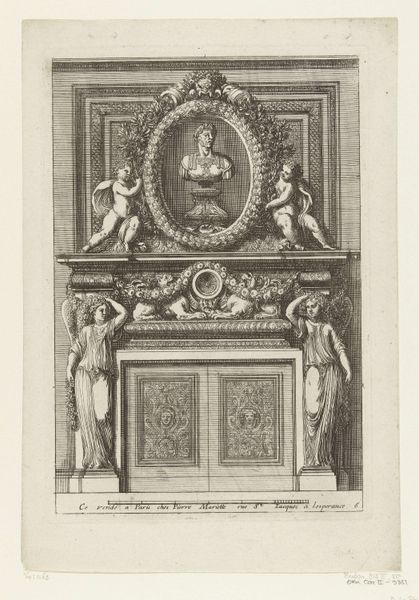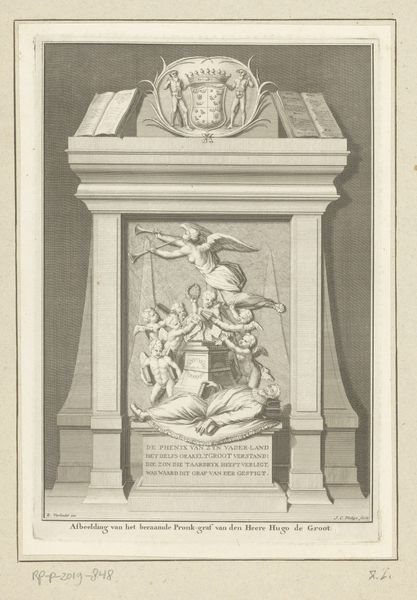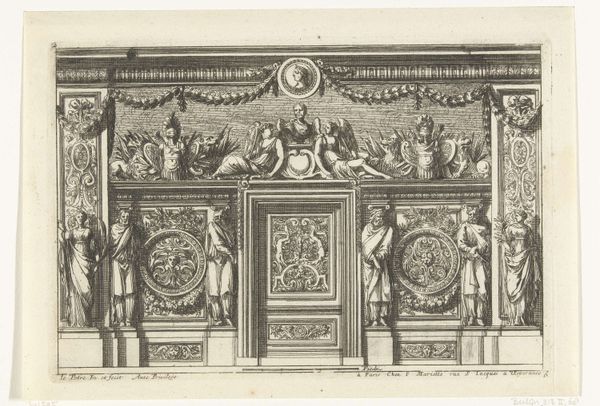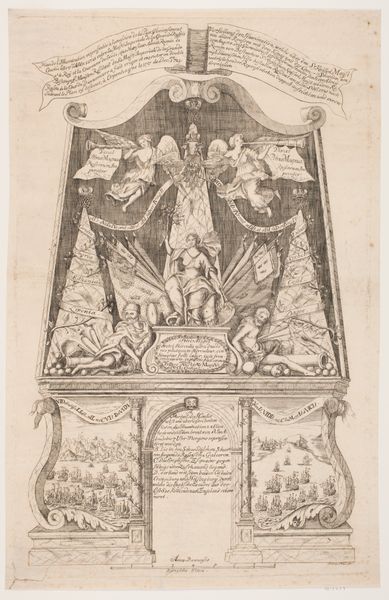
Triumphal arch, from 'Éloges et discours sur la triomphante réception du Roy en sa ville de Paris ...' by Jean-Baptiste de Machault 1629
0:00
0:00
drawing, print, engraving
#
drawing
#
allegory
#
baroque
# print
#
figuration
#
cityscape
#
history-painting
#
decorative-art
#
engraving
Dimensions: Sheet: 11 15/16 × 8 7/8 in. (30.4 × 22.5 cm) Plate: 11 5/16 × 8 5/16 in. (28.8 × 21.1 cm)
Copyright: Public Domain
Curator: What strikes me first is the incredible intricacy. Look at the level of detail in this engraving, made in 1629 by Melchior Tavernier, it is called Triumphal Arch, from '\'Éloges et discours sur la triomphante réception du Roy en sa ville de Paris...' It's an imagined architectural structure. Editor: My immediate thought? Regal, but with a touch of the absurd. Those mermaid-like figures acting as columns! It’s playful, while still communicating power. A fantasy construction in monochrome. Curator: Precisely! Tavernier, known for his engravings, created this print as part of a series commemorating a royal visit to Paris. The Arch, existing only on paper, acted as a form of propaganda, reflecting and bolstering royal power and legitimization strategies. The use of etching in prints at the time would make the work more reproducible and available for the masses, Editor: It's interesting how prints circulated—the artistic equivalent of a viral meme today. What did this triumphant entry *mean*, in terms of lived reality? I find myself thinking about the actual labour, resources, and expenditure needed, or perhaps denied to other groups. The costuming! The logistics! How many trees turned into paper like this, circulating the "right" images? Curator: Indeed, these arches and accompanying events solidified the perception of monarchial authority, it had a political goal in this time of shifting power in the regency, that made for more complex production. Notice the upper register: it depicts the royal galley. That visual is making the king a ruler of seas, also a clever power move when connected with the architecture. The choice of figuration to evoke aquatic imagery draws classical links with figures from mythology. Editor: Definitely! It seems there are many classical references. Even without the color it bursts forth with symbolic intention. Each character feels weighted with meaning. From this angle, one gets the impression that these kinds of displays are always on show; constant, circulating, and hard to ignore if you are a contemporary. And from this distance in time, they echo. Curator: It really invites to contemplate the artistry of the medium combined with that political performance, they become really intertwined in understanding baroque ideology. Editor: I agree. It reminds us how closely spectacle and power were linked—and in some ways, still are, but that power lives in memory through the art produced at that time.
Comments
No comments
Be the first to comment and join the conversation on the ultimate creative platform.
